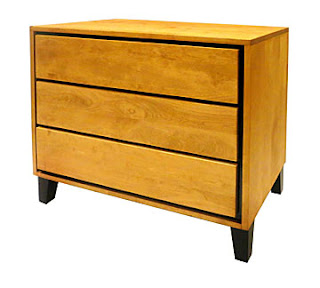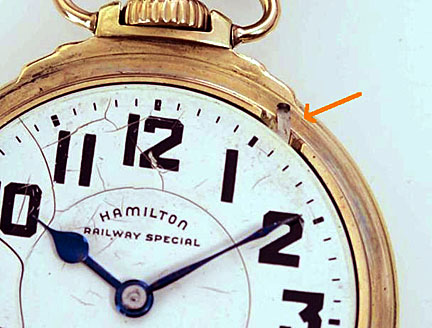 QUESTION: Some time ago, I was browsing at a local flea market where I came upon a small decorated wooden box on one of the tables. The top had a serious of interlocking blocks that formed a sort of optical illusion. And on closer inspection, I realized little pieces of wood veneer covered the entire surface of the box. I’ve never seen anything like it since. Needless to say, I paid for the box immediately. Can you tell me what sort of decoration is on this box? How old might it be?
QUESTION: Some time ago, I was browsing at a local flea market where I came upon a small decorated wooden box on one of the tables. The top had a serious of interlocking blocks that formed a sort of optical illusion. And on closer inspection, I realized little pieces of wood veneer covered the entire surface of the box. I’ve never seen anything like it since. Needless to say, I paid for the box immediately. Can you tell me what sort of decoration is on this box? How old might it be?
ANSWER: What you have is an example of Tunbridge ware, a form of decoratively inlaid woodwork, typically in the form of boxes, that originated in Tonbridge, England, and the spa town of Royal Tunbridge Wells in Kent in 1830. The decoration consisted of a mosaic of many tiny pieces of different colored wood assembled to form a design or scene.
 Located about 40 miles southeast of London, the spa town of Tunbridge Wells sits in a wooded area. In the 17th century, there was so much timber that woodwork became the town’s main industry. For over 200 years, local makers specialized in this distinctive wooden ware. Originally, woodworkers decorated their creations with simple designs, painted on to light-colored objects.
Located about 40 miles southeast of London, the spa town of Tunbridge Wells sits in a wooded area. In the 17th century, there was so much timber that woodwork became the town’s main industry. For over 200 years, local makers specialized in this distinctive wooden ware. Originally, woodworkers decorated their creations with simple designs, painted on to light-colored objects.
Around 1830, James Burrows invented a technique of creating mosaics from wooden pieces. He tightly glued together a bunch of wooden sticks of different colors, each having triangular or diamond-shaped cross section. For half-square mosaic, Burrows took thin slices from the composite block and applied them to the surface of an object, usually a box.
 Makers of early Tunbridge ware didn’t decorate it but by the second half of the 18th century, more decoration appeared. Some were painted in colors on a whitewood background or painted in black to imitate Asian styles.
Makers of early Tunbridge ware didn’t decorate it but by the second half of the 18th century, more decoration appeared. Some were painted in colors on a whitewood background or painted in black to imitate Asian styles.
At first the designs were simple and often geometrical, such as a clever arrangement of piled cubes, but as the artisans became more expert, they used an effective pattern representing wool-work. Pictures in mosaic of places of interest were another addition.
 Making Tunbridge ware was tedious. Each separate fragment had to be laboriously fitted into its place until the picture was completed. Even then only one mosaic resulted from days of toil. To get over this difficulty, Burrows hit on the scheme of assembling a number of thin strips of appropriately colored woods into a block,. about 12 to 18 inches deep, so that their ends made up the desired scene or pattern. Bound, and glued under pressure, the strips were finally formed into one compact whole. A circular saw was next employed to shave off wafer-thin slices from across the block, and each of these layers now became a veneer which could easily be glued to the article it was to decorate.
Making Tunbridge ware was tedious. Each separate fragment had to be laboriously fitted into its place until the picture was completed. Even then only one mosaic resulted from days of toil. To get over this difficulty, Burrows hit on the scheme of assembling a number of thin strips of appropriately colored woods into a block,. about 12 to 18 inches deep, so that their ends made up the desired scene or pattern. Bound, and glued under pressure, the strips were finally formed into one compact whole. A circular saw was next employed to shave off wafer-thin slices from across the block, and each of these layers now became a veneer which could easily be glued to the article it was to decorate.
 The makers of Tunbridge ware employed about 40 different kinds of wood in a variety of colors. They used only natural colors. They often took designs, such as the block over block motif, for their articles from Berlin wool work.
The makers of Tunbridge ware employed about 40 different kinds of wood in a variety of colors. They used only natural colors. They often took designs, such as the block over block motif, for their articles from Berlin wool work.
Besides the Burrows family, the other company making Tunbridge ware in the 1830s was Fenner and Company. When William Fenner retired in 1840, Edmund Nye and his father took over the business, after 30 years in partnership with him. The company made articles such as workboxes and tea caddies with prints of popular views. Later items had pictures created from mosaics.
 Edmund Nye, Robert Russell, and Henry Hollamby showed their Tunbridge ware at the Great Exhibition of 1851. Edmund Nye received a commendation from the judges for a a table depicting a mosaic of a ship at sea which used 110,800 wooden tesserae.
Edmund Nye, Robert Russell, and Henry Hollamby showed their Tunbridge ware at the Great Exhibition of 1851. Edmund Nye received a commendation from the judges for a a table depicting a mosaic of a ship at sea which used 110,800 wooden tesserae.
The makers of Tunbridge ware operated cottage industries There were no more than nine in Tunbridge Wells and one in Tonbridge. The number declined in the 1880s since finding skilled craftsmen was difficult, plus public tastes changed. After the death of Thomas Barton in 1903, the only surviving firm was Boyce, Brown and Kemp, which closed in 1927.
Princess Victoria favored Tunbridge ware in the early 19th century. Local makers drew lots to present Princess Victoria with a single example piece of their artistry. A work table described as ‘veneered with party-colored woods from every part of the globe’ and ‘lined with gold tufted satin’ was given to the royal visitor.
 Visitors flocked to the spa town of Tunbridge Wells and bought the items as souvenirs and gifts. Articles included cribbage boards, paperweights, writing slopes, snuff boxes and glove boxes. Well-healed travelers had a variety of objects to choose from. Tables, tea caddies, rulers, workboxes, holders , fruit or bread baskets, candlesticks, chess tables, pencil boxes, stationery cabinets, and pin trays were but a few of the many items decorated using the wood mosaic technique.
Visitors flocked to the spa town of Tunbridge Wells and bought the items as souvenirs and gifts. Articles included cribbage boards, paperweights, writing slopes, snuff boxes and glove boxes. Well-healed travelers had a variety of objects to choose from. Tables, tea caddies, rulers, workboxes, holders , fruit or bread baskets, candlesticks, chess tables, pencil boxes, stationery cabinets, and pin trays were but a few of the many items decorated using the wood mosaic technique.
To read more articles on antiques, please visit the Antiques Articles section of my Web site. And to stay up to the minute on antiques and collectibles, please join the over 30,000 readers by following my free online magazine, #TheAntiquesAlmanac. Learn more about "The Age of Photography" in the 2023 Fall Edition, online now. And to read daily posts about unique objects from the past and their histories, like the #Antiques and More Collection on Facebook.





















































